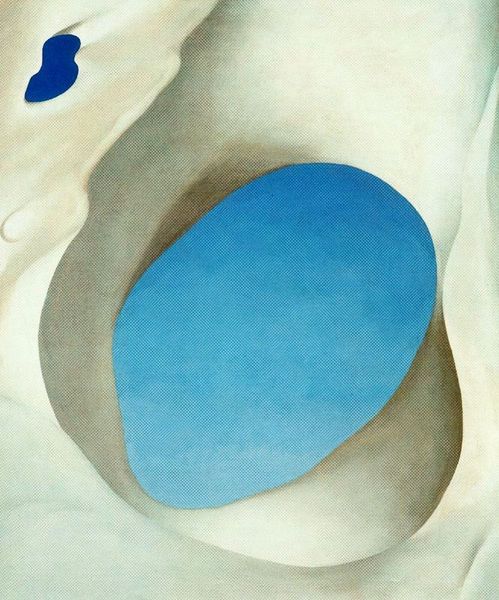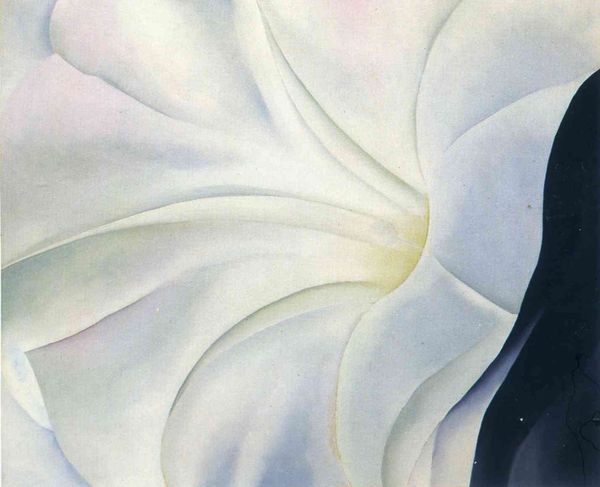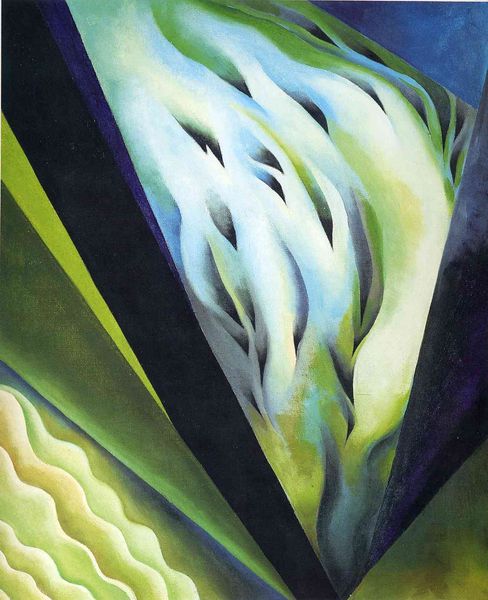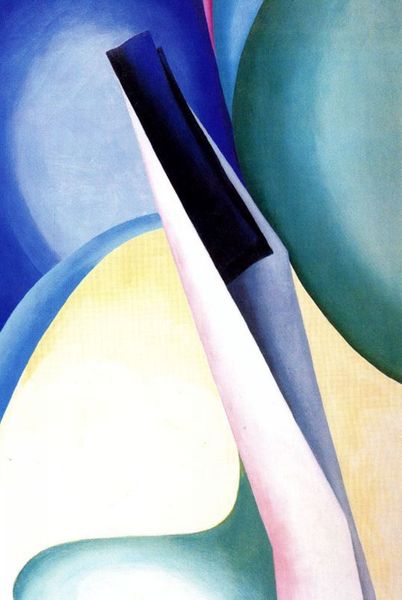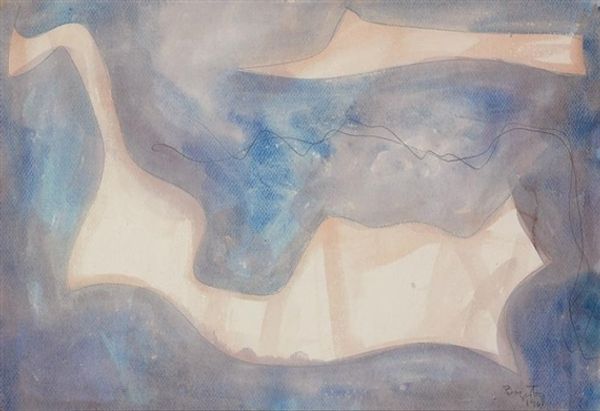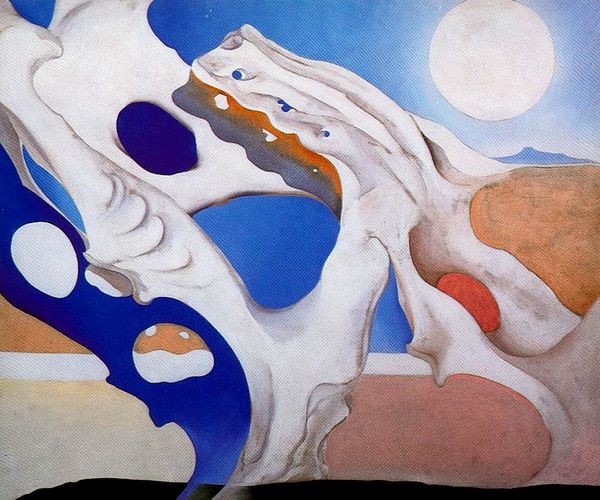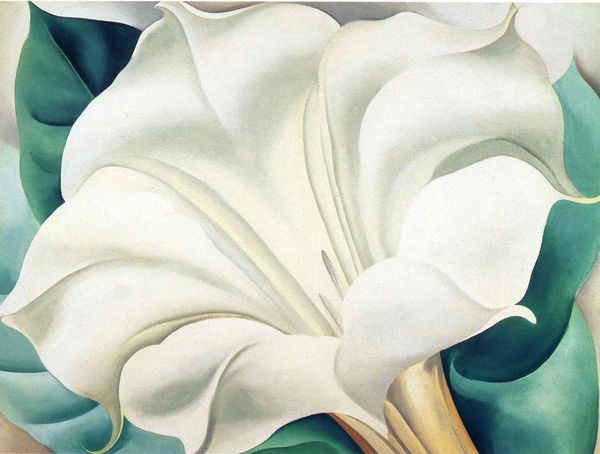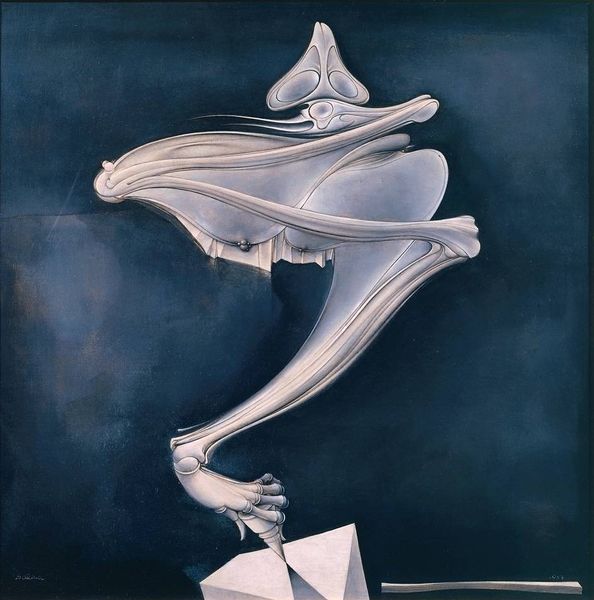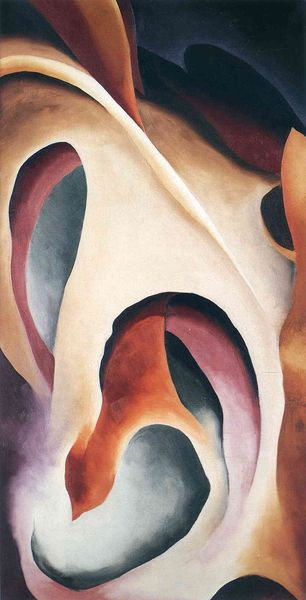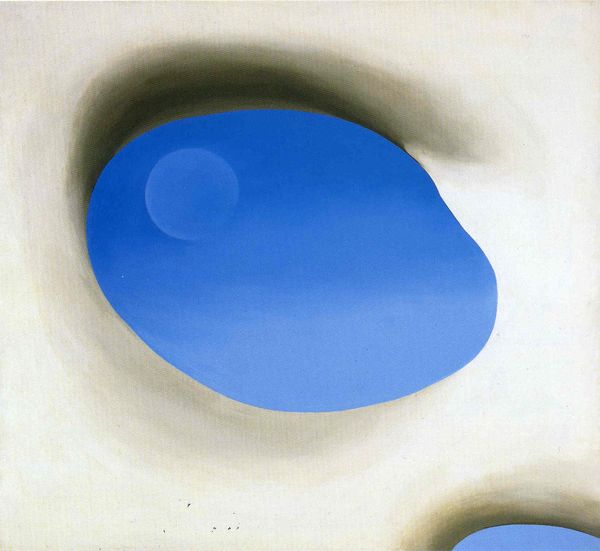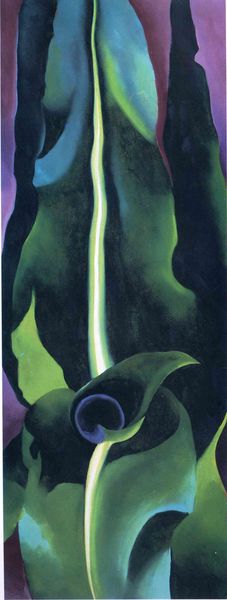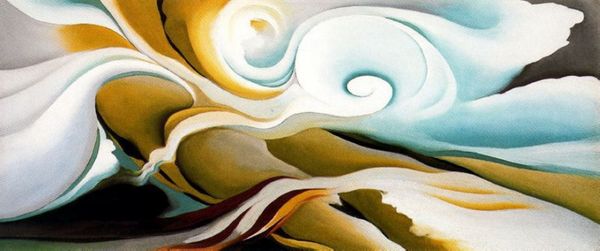
painting, oil-paint
#
precisionism
#
organic
#
painting
#
oil-paint
#
form
#
oil painting
#
geometric
#
abstraction
#
modernism
Copyright: Georgia O'Keeffe,Fair Use
Curator: Welcome. Here, we are looking at Georgia O'Keeffe's "Pelvis II" from 1944, an oil painting. Editor: It's calming. The interplay of the blues and whites is ethereal, like peering into some vast, abstract sky. I can see why people associate O’Keeffe with sensual imagery, the shapes almost echo internal organs, maybe that’s because it is part of a bone. Curator: O’Keeffe's depictions of bones, particularly from the desert landscapes she so loved in New Mexico, emerged during a time when her urban New York environment had begun to feel restrictive. You can understand how they represented an attempt to make larger and more iconic statements with nature, using their abstraction. Editor: So, these weren’t scientific illustrations? Were these large in scale to confront the patriarchy by mirroring images that would otherwise allude to women’s private areas? Curator: Their scale does demand attention. The artist, after an artistic block caused by stress, moved to representing forms more freely. She also created pieces that directly questioned established notions of beauty by drawing from unconventional sources like bones or her landscapes, in a way that mirrored female power in society and celebrated beauty that may otherwise have been forgotten. Editor: These weren't mere pretty pictures; they challenged accepted aesthetic conventions. Seeing bone made so sensuous… that’s subversive. In the context of a male-dominated art world, it’s revolutionary. Did this form influence any architectural details that relate to the home, something traditionally linked to female ownership? Curator: There isn’t a straight architectural connection, however you might compare the sensuous qualities here with designers and craftspeople who emphasize flowing organic details within buildings. Editor: O’Keefe’s artwork, especially today, invites us to consider women artists and how societal and cultural environments restrict how they want to reflect beauty and expression within our everyday lives. Curator: Precisely. And what's beautiful about exploring her work today, is seeing just how enduring that call to re-evaluate perspectives is.
Comments
No comments
Be the first to comment and join the conversation on the ultimate creative platform.
